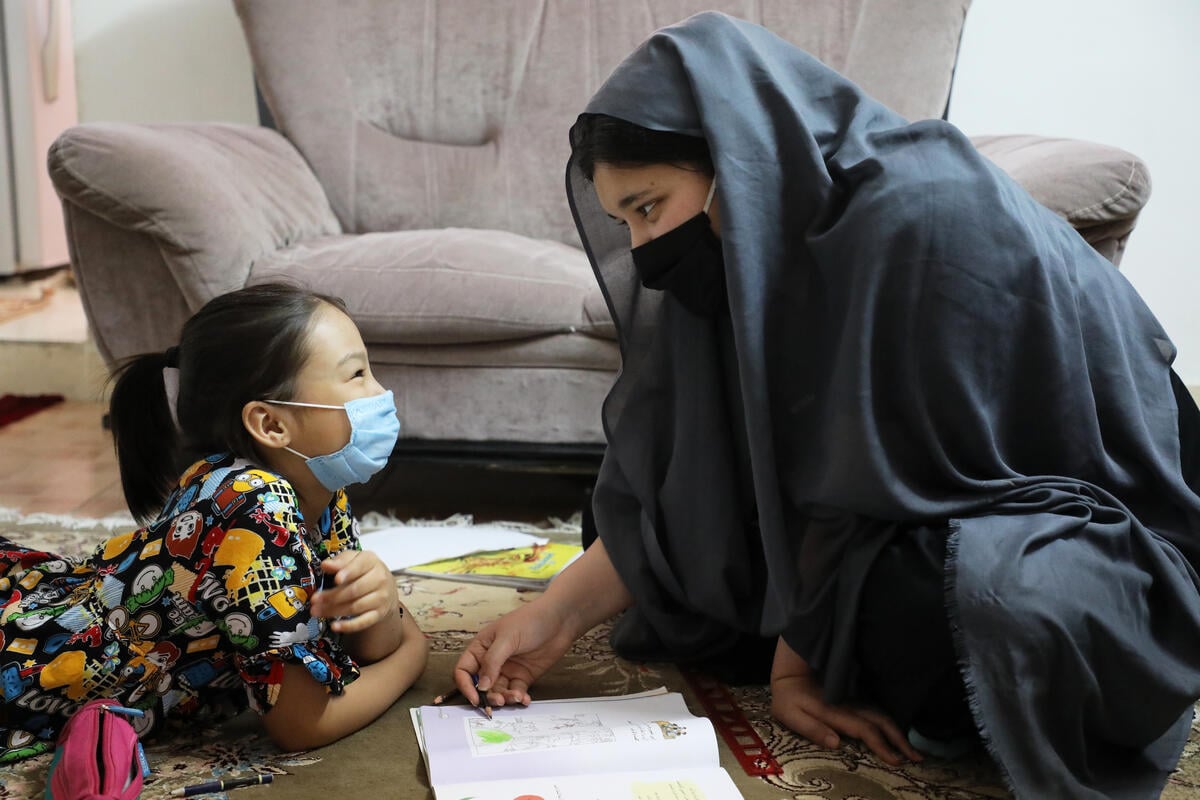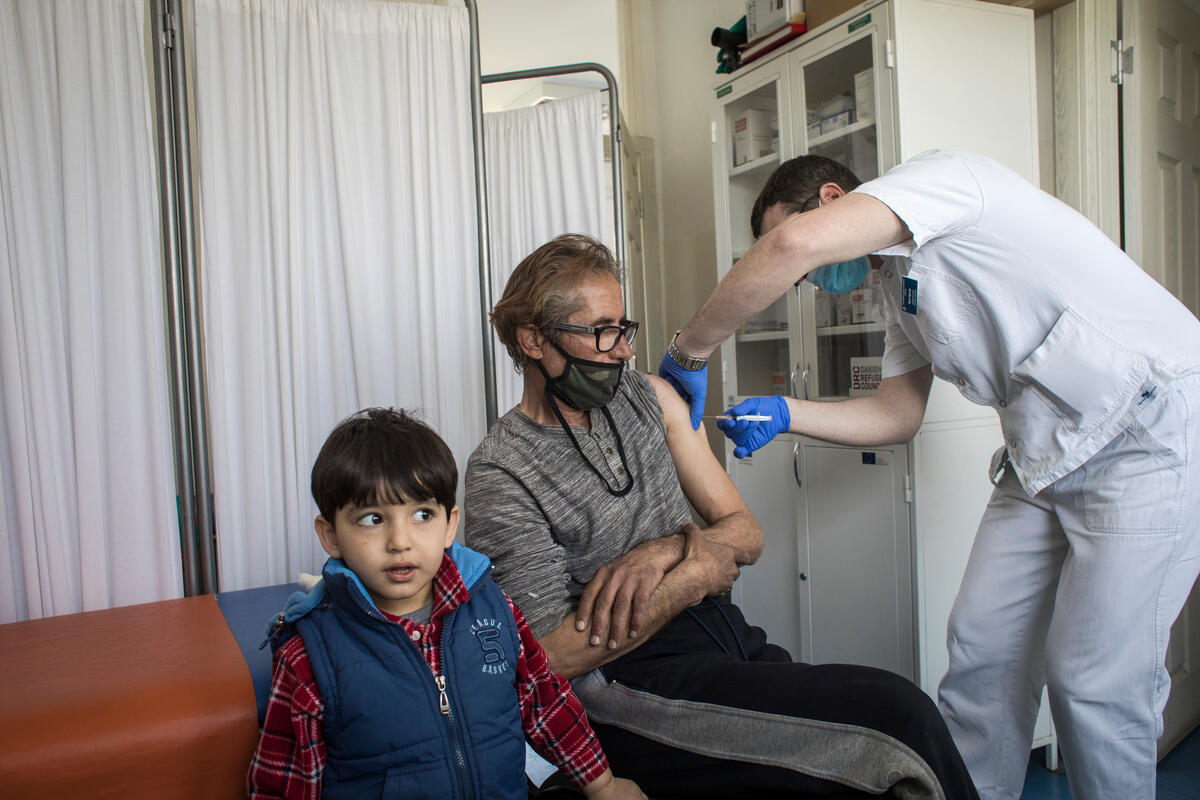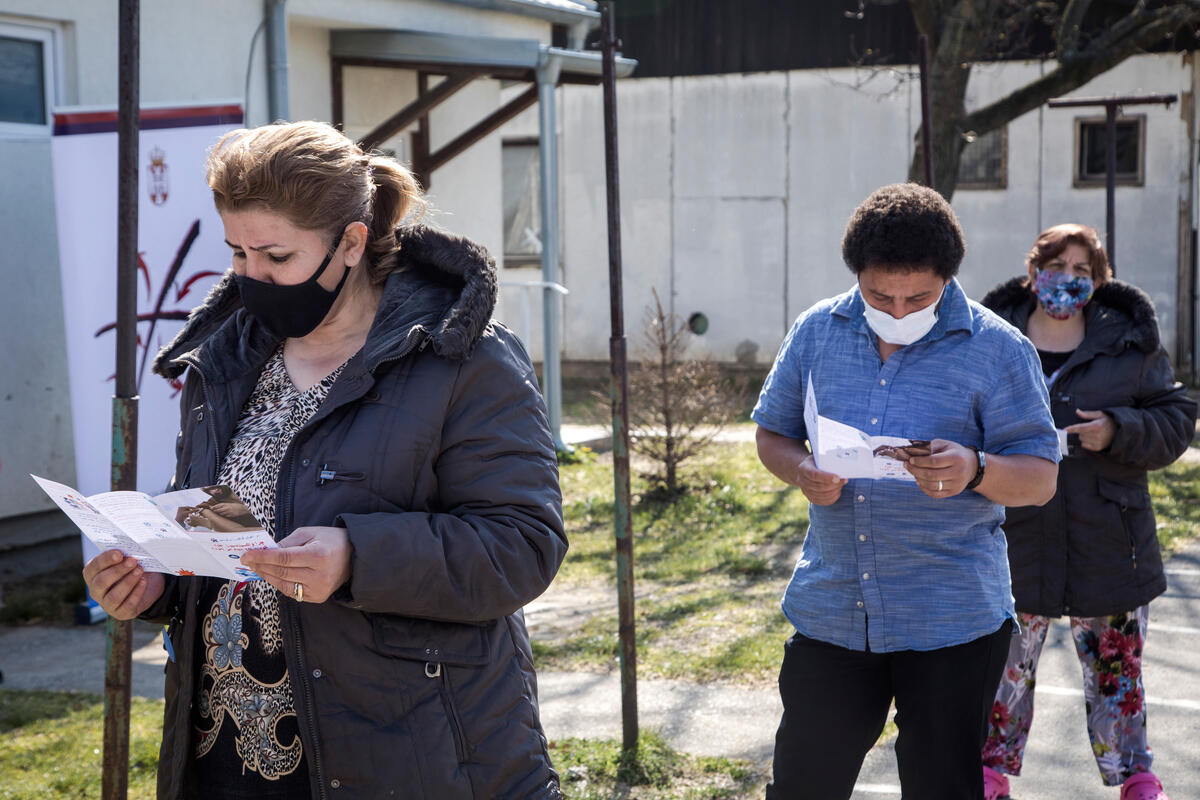Horn of Africa: more Eritreans heading for Sudan?
Horn of Africa: more Eritreans heading for Sudan?
Only a few dozen people crossed the border from Eritrea to Sudan overnight at the Um Safir and Ghergef crossings, while UNHCR continued to register those who had arrived earlier in the week. As of this morning, the total number now stands at almost 45,000.
The few arrivals on Thursday at Sudan's Gerghef crossing talked about the fall of the Eritrean towns of Gelug, Taberdia and Gerghef between Tesseney and Omhajer in southern Eritrea, raising fears that many more Eritreans may be heading for Sudan. Although we are unable to confirm the numbers, some 150,000 people are reported to be scattered along the Eritrean border. They are likely to move to Sudan if their provisions run out.
The Sudanese government has agreed to transfer 103 Ethiopians who fled to Sudan alongside the Eritreans to a separate camp of Wad El Hilleau, further inland, after tensions were reported between Eritrean and Ethiopian refugees at the Um Safir camp.
The first UNHCR relief flight arrived in Khartoum on Thursday, bringing in 42 metric tons of plastic sheeting, kitchen sets, health kits and hygiene items from Copenhagen and Cairo. The Airbus 300 is expected to shuttle between Khartoum, Copenhagen and Cairo over the next several days bringing in more supplies. A UNHCR-sponsored vaccination campaign, which started on May 19, continues in the camps. To date, 10,960 people have been vaccinated against meningitis and polio.
As mentioned in yesterday's (Thursday) update, UNHCR is also mounting an assistance programme in Eritrea for some of the hundreds of thousands of people who have reportedly fled their homes. Many of the internally displaced are believed to have been returnees previously assisted by UNHCR. UNHCR is preparing to issue an appeal for emergency funding of the operation. We've already released more than $1.5 million from our operational reserve.
In Eritrea, UNHCR last week joined a multi-agency mission that visited encampments of displaced people in Dige, Fjorto and Girmaika in the western Gash-Barka region - 220 to 300 km west of Asmara. In these places, the mission saw concentrations of displaced people of from 4,000 to 5,000 people - 70 percent children and up to 30 percent women. They don't have adequate shelter or sanitation facilities and are mainly in the open fields, along riverbeds and valleys. The region is extremely hot and inhospitable and wind and dust make the situation worse. There are very few trees and shrubs in the area. The mission was told that there are many more IDPs - most of whom were refugees in Sudan during the Eritrean war of liberation - in areas that are so far inaccessible.









